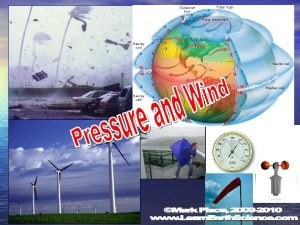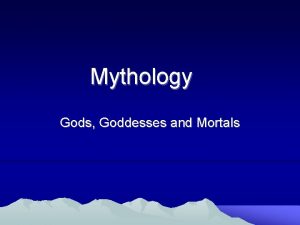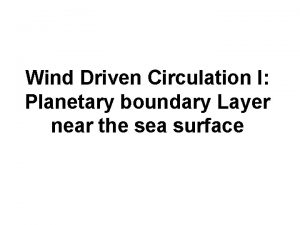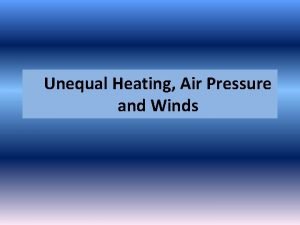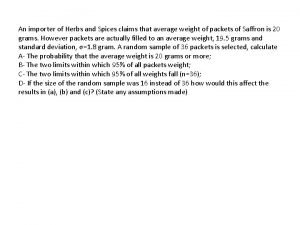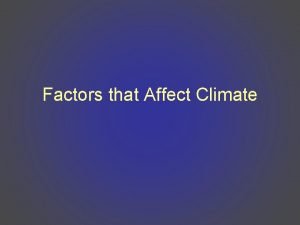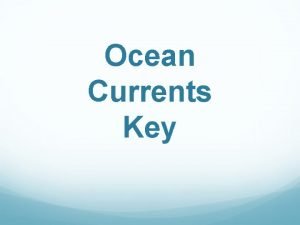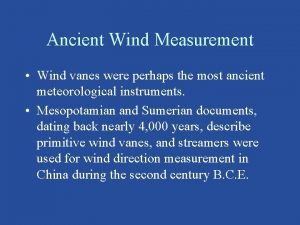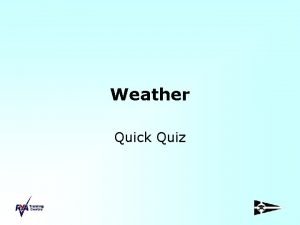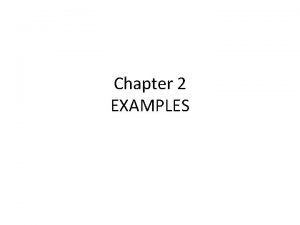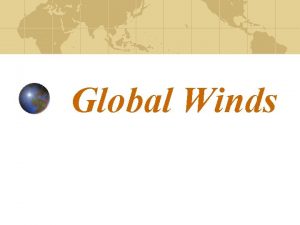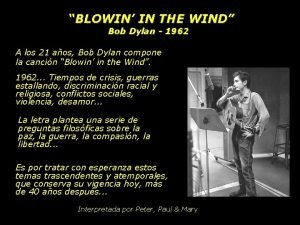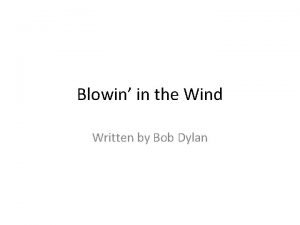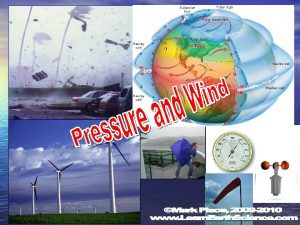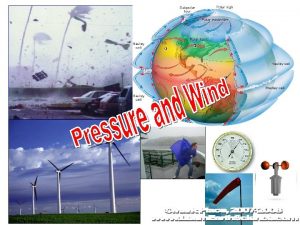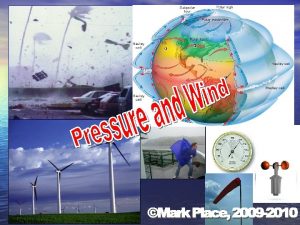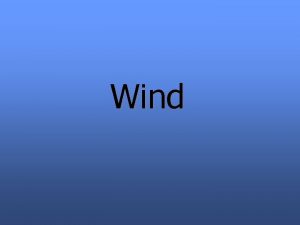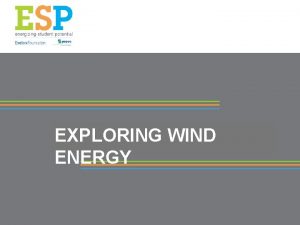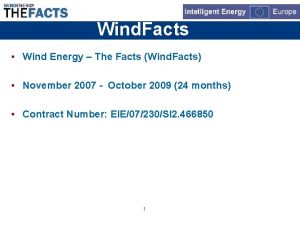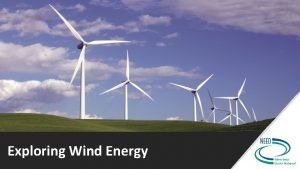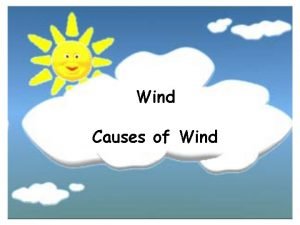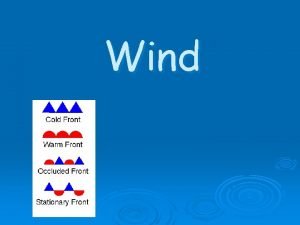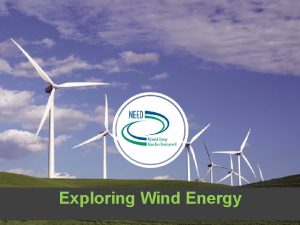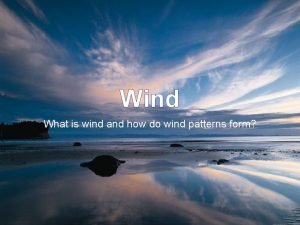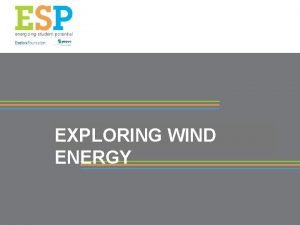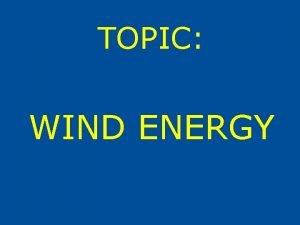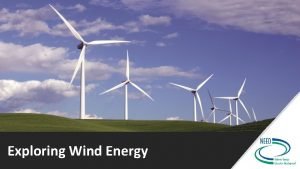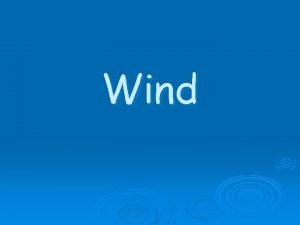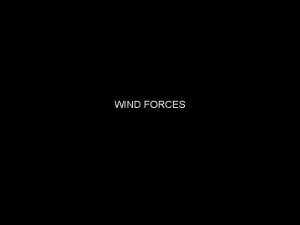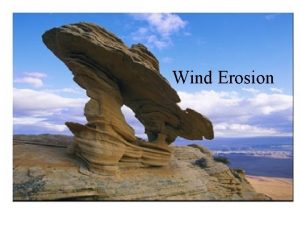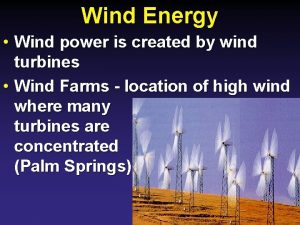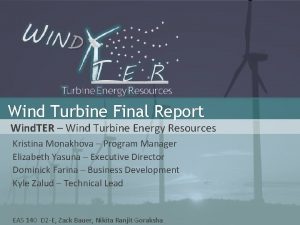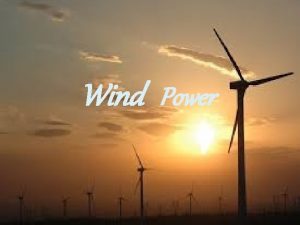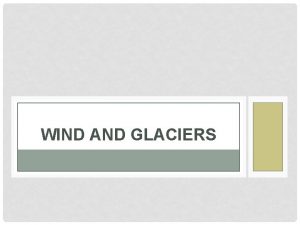ORIGIN from Greek anemos wind ORIGIN from Greek

![[ORIGIN from Greek anemos ‘wind’] [ORIGIN from Greek baros ‘weight’] [ORIGIN from Greek anemos ‘wind’] [ORIGIN from Greek baros ‘weight’]](https://slidetodoc.com/presentation_image_h2/027a3941e5da75f00d3df79e9f063c06/image-2.jpg)



























- Slides: 29

![ORIGIN from Greek anemos wind ORIGIN from Greek baros weight [ORIGIN from Greek anemos ‘wind’] [ORIGIN from Greek baros ‘weight’]](https://slidetodoc.com/presentation_image_h2/027a3941e5da75f00d3df79e9f063c06/image-2.jpg)
[ORIGIN from Greek anemos ‘wind’] [ORIGIN from Greek baros ‘weight’]




In a high pressure area, air will (rise, sink) because the air is (less, more) dense. This is because the air is (cold, warm) and (rises, sinks). Therefore, clouds CANNOT form.

In a low pressure area, air will (rise, sink) because the air is (less, more) dense. This is because the air is (cold, warm) and (rises, sinks). Therefore, clouds are LIKELY to form.

Correctly draw the direction of wind flow around both a high and a low pressure area in the NORTHERN HEMISPHERE.

low pressure high pressure warm or cold air rising or sinking clouds or no clouds clockwise or counterclockwise wind direction winds toward or away from the center

On the diagrams below, label which one represents a land breeze and which represents a sea breeze. Correctly label on each diagram where the high and low pressure areas would be found.

On the diagrams below, label which one represents a land breeze and which represents a sea breeze. Correctly label on each diagram where the high and low pressure areas would be found.

On the diagrams below, label which one represents a land breeze and which represents a sea breeze. Correctly label on each diagram where the high and low pressure areas would be found.

This is the story of storms! L What type of pressure system is this? ?

The Weather Man

The Coriolis Effect Because of the earth's rotation (from west to east) any wind or water will appear to: • Turn to the right of its direction of motion in the Northern Hemisphere and • Turn to the left of its direction of motion in the Southern Hemisphere. • This is called the Coriolis Effect!! Makes it big in a movie

Coriolis Force

The Coriolis Effect

The Jet Stream • The jet stream is literally a river of wind high in the atmosphere. • The jet streams can steer major air masses, pressure systems, and fronts in certain directions. • There are two main jet streams in each hemisphere. 1) Subtropical Jet Stream 2) Polar Jet Stream


Global Atmospheric Circulation Model

bottom of page 14 has a planetary wind belt diagram!

Using the chart on page 14, state the prevailing wind direction for each latitude below: 45°N

Using the chart on page 14, state the prevailing wind direction for each latitude below: 45°N 45°S 75°N 20°N



1. The diagram below represents the general circulation of the Earth's atmosphere and the Earth's planetary wind and pressure belts. Points A through F represent locations on the Earth's surface. Which location is experiencing a southwest planetary wind? A) F B) D C) C D) B

2. The diagram below represents the general circulation of the Earth's atmosphere and the Earth's planetary wind and pressure belts. Points A through F represent locations on the Earth's surface. Which location is near the center of a low-pressure belt where daily rains are common? A) E B) B C) F D) D


4. 5. What is the Coriolis Effect?
 Anemos wind
Anemos wind Steuerbord vor backbord
Steuerbord vor backbord Ancient greek musical instruments
Ancient greek musical instruments Jovial greek origin
Jovial greek origin Greek amphitheatre
Greek amphitheatre Kata euthanasia berasal dari bahasa
Kata euthanasia berasal dari bahasa The history of greek drama
The history of greek drama The word euthanasia is of greek origin
The word euthanasia is of greek origin What is the greek miracle in greek mythology
What is the greek miracle in greek mythology Conclusion of wind energy
Conclusion of wind energy Nature of the wind
Nature of the wind Wind generators
Wind generators Maj. buang-ly
Maj. buang-ly Wind
Wind High pressure winds
High pressure winds A researcher claims that the average wind speed
A researcher claims that the average wind speed Wind composite services
Wind composite services How does wind affect weather and climate
How does wind affect weather and climate The wind stirs up _____ currents.
The wind stirs up _____ currents. Facts about wind vane
Facts about wind vane Sara hodge
Sara hodge Force 8 wind
Force 8 wind Mechanical energy examples
Mechanical energy examples Difference between local winds and global winds
Difference between local winds and global winds Wind bot
Wind bot How many times bob dylan
How many times bob dylan Wind tower
Wind tower Who wrote blowin in the wind
Who wrote blowin in the wind Ventera wind
Ventera wind Weathering vs erosion
Weathering vs erosion
